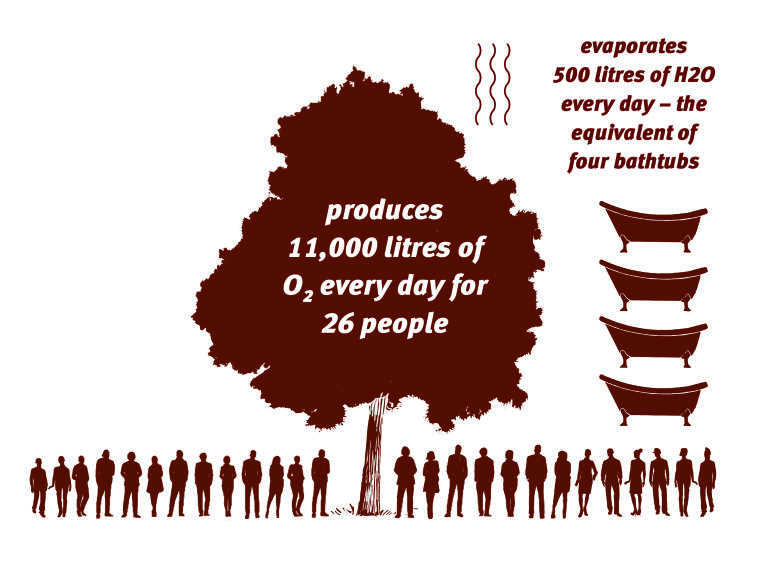

THE OAK TREE: QUEEN OF THE FOREST
Trees play an important role in our customs and traditions. In tree symbolism, the majestic oak – the “King of the Forest” – stands for strength, freedom, honour, vitality and immortality. The oak is a typical tree under which justice was dispensed for many centuries. The idea was that the properties attributed to the oak would have a positive effect on the justice of the judgements passed.
Fruit
The fruit of the oak – the acorn – is a typical feature of the tree. Acorns are very nutritious because of their high content in starch, fat and proteins, but are inedible for humans because of the bitter substances they contain. But can you explain the saying, “The best hams grow on oaks”? What is meant by this is that, for centuries, boars were fattened up on nutritious acorns, and so people said that pigs fed on acorns provided tasty meat and firm ham.

Wood
As for the oak’s strength, oak is well-known for being a very hard wood and this is why it is often used in the production of furniture and for parquet flooring. But that’s not all! Did you know that oak wood that has been stored for a long time is so hard that you can’t even hammer a nail into it? And oak wood doesn’t decay as long as it is kept under water without oxygen. This is the reason why, in the Dutch city of Amsterdam for example, both the railway station and the houses along the historic canals are built entirely on oak piles.

Nature’s air-conditioning system
- Trees can transport water out of the ground up to a height of 100 metres – a spectacular physical achievement! Most of the water evaporates through the leaves, thereby contributing to humidity.
- Trees consume more carbon dioxide (CO2) than the oxygen (O2) they produce. How much a tree can contribute to good air quality depends above all on the diameter of its crown and on how many leaves it has.
- A 150-year-old beech tree, for example, produces around 11,000 litres of oxygen per day, which is the daily requirement for about 26 people. Every day around 500 litres of water evaporate through its leaves – the equivalent of four bathtubs.
Trees have lots of good properties! They…
- filter dust and other pathogens such as bacteria and harmful fungi out of the air
- provide shade
- reduce wind speed
- reduce noise
- produce wood
- provide fruit
- create habitats for numerous species of animals and are a source of food for them
- improve the soil with humus from fallen leaves and dead wood
- make our towns and cities more attractive
WHAT'S THE ANSWER?
1. How many different types of oak tree are there worldwide?
2. How many kilograms of acorns does an oak produce in a year?
3. What age can oaks live to?
4. Many people carry an oak leaf around with them every day. How can that be?
SOLVING:
1. Around 600. This means that there are more types of oak than of any other species of deciduous tree.
2. Around 150 kilograms, which is about the weight of two men.
3. They can live to over 1,000 years. In Germany, that’s the combined average ages of 13 people. On Johns Island in South Carolina (USA) there is an oak called Angel Oak which is reckoned to be up to 1,500 years old.
4. Oak leaves are depicted on the reverse of the German 1, 2 and 5 cent coins. Have a look! These oak leaves have a history to them: the Munich Coin Treaty of 1837 created a unified economic area out of a number of individual German states. In order to emphasise this new unity and strength, the symbol of the oak leaf was used on the coins. And that is still used today!

